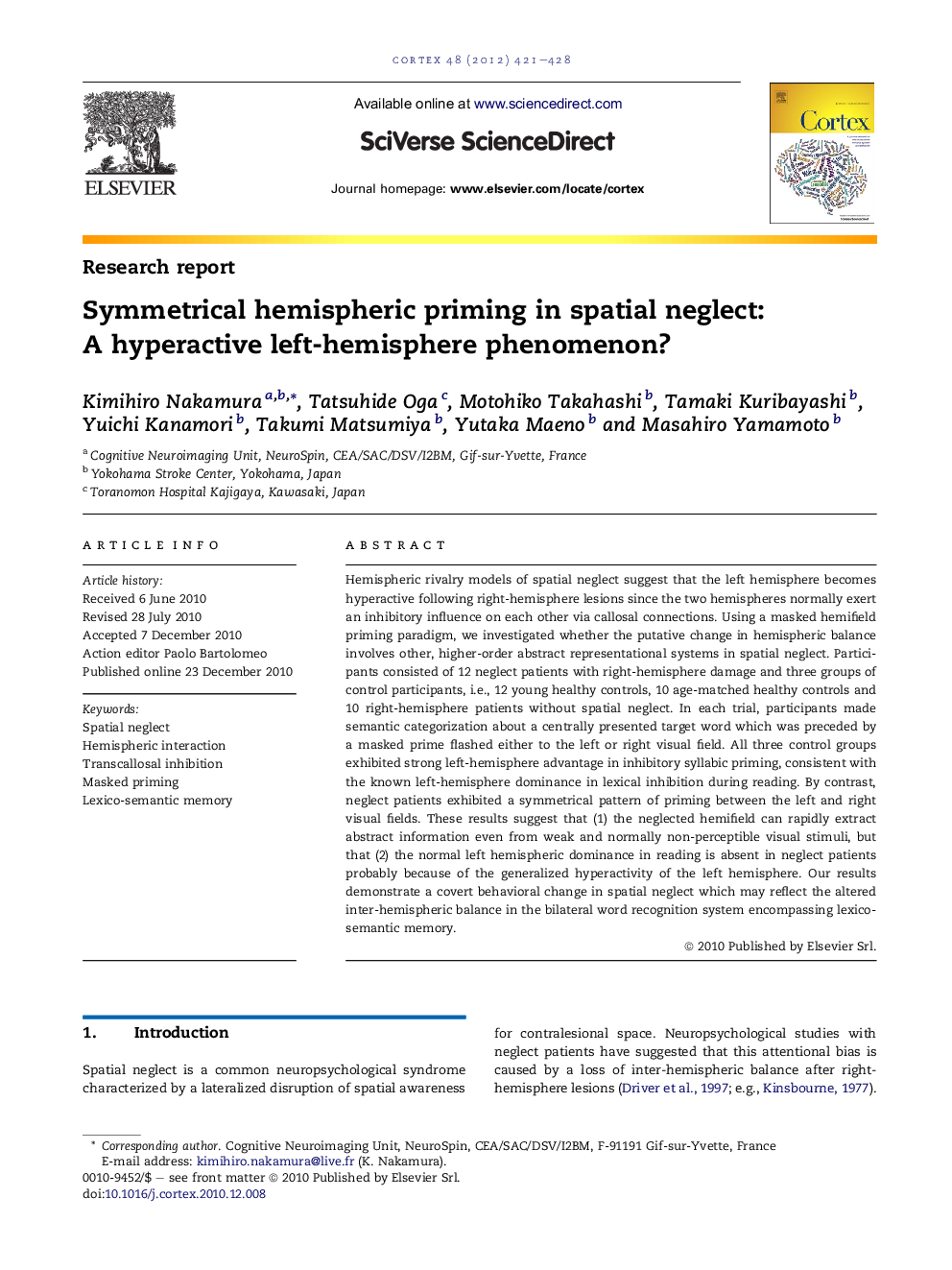| Article ID | Journal | Published Year | Pages | File Type |
|---|---|---|---|---|
| 942131 | Cortex | 2012 | 8 Pages |
Hemispheric rivalry models of spatial neglect suggest that the left hemisphere becomes hyperactive following right-hemisphere lesions since the two hemispheres normally exert an inhibitory influence on each other via callosal connections. Using a masked hemifield priming paradigm, we investigated whether the putative change in hemispheric balance involves other, higher-order abstract representational systems in spatial neglect. Participants consisted of 12 neglect patients with right-hemisphere damage and three groups of control participants, i.e., 12 young healthy controls, 10 age-matched healthy controls and 10 right-hemisphere patients without spatial neglect. In each trial, participants made semantic categorization about a centrally presented target word which was preceded by a masked prime flashed either to the left or right visual field. All three control groups exhibited strong left-hemisphere advantage in inhibitory syllabic priming, consistent with the known left-hemisphere dominance in lexical inhibition during reading. By contrast, neglect patients exhibited a symmetrical pattern of priming between the left and right visual fields. These results suggest that (1) the neglected hemifield can rapidly extract abstract information even from weak and normally non-perceptible visual stimuli, but that (2) the normal left hemispheric dominance in reading is absent in neglect patients probably because of the generalized hyperactivity of the left hemisphere. Our results demonstrate a covert behavioral change in spatial neglect which may reflect the altered inter-hemispheric balance in the bilateral word recognition system encompassing lexico-semantic memory.
